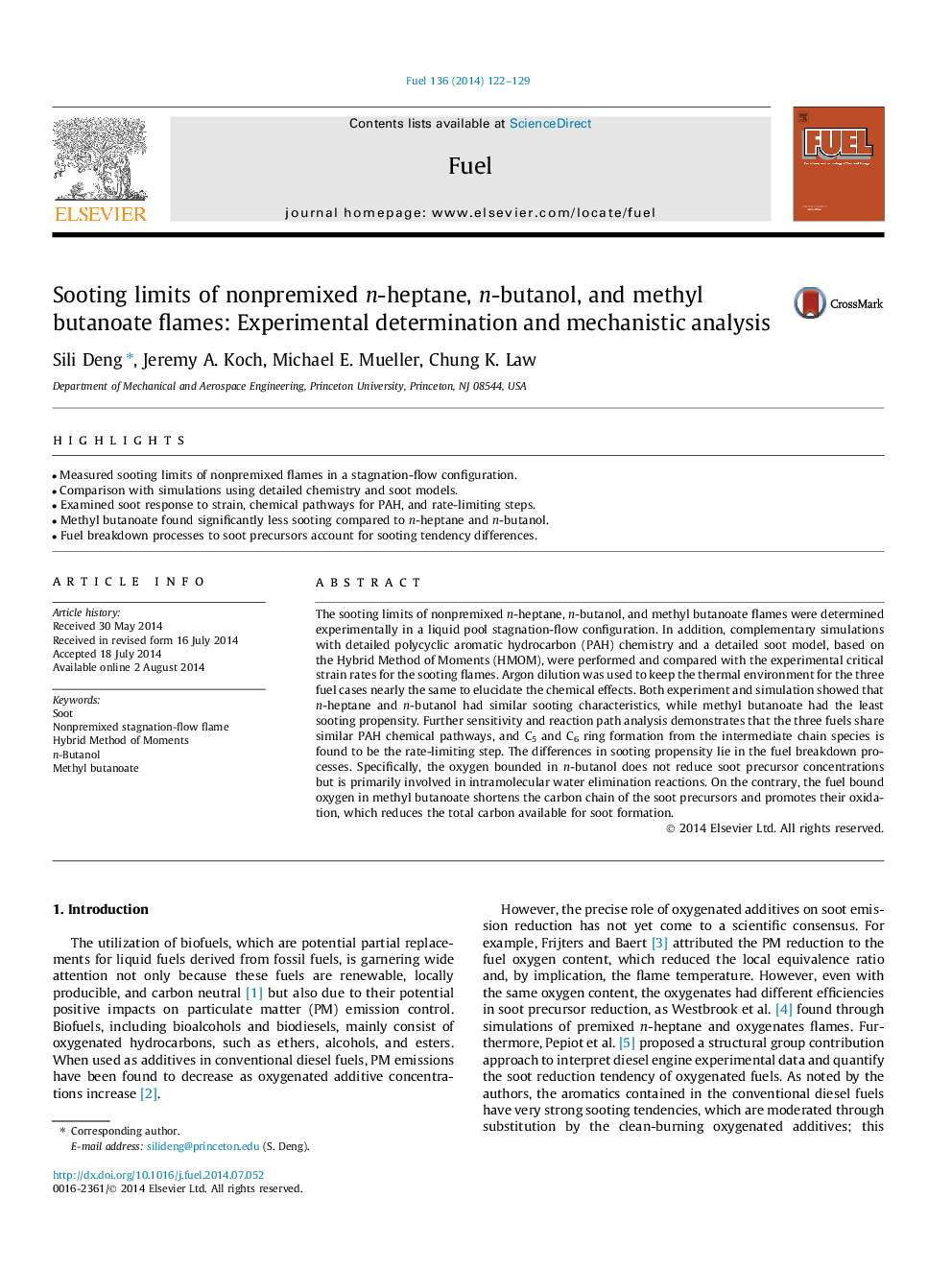| Article ID | Journal | Published Year | Pages | File Type |
|---|---|---|---|---|
| 206081 | Fuel | 2014 | 8 Pages |
•Measured sooting limits of nonpremixed flames in a stagnation-flow configuration.•Comparison with simulations using detailed chemistry and soot models.•Examined soot response to strain, chemical pathways for PAH, and rate-limiting steps.•Methyl butanoate found significantly less sooting compared to nn-heptane and nn-butanol.•Fuel breakdown processes to soot precursors account for sooting tendency differences.
The sooting limits of nonpremixed n-heptane, n-butanol, and methyl butanoate flames were determined experimentally in a liquid pool stagnation-flow configuration. In addition, complementary simulations with detailed polycyclic aromatic hydrocarbon (PAH) chemistry and a detailed soot model, based on the Hybrid Method of Moments (HMOM), were performed and compared with the experimental critical strain rates for the sooting flames. Argon dilution was used to keep the thermal environment for the three fuel cases nearly the same to elucidate the chemical effects. Both experiment and simulation showed that n-heptane and n-butanol had similar sooting characteristics, while methyl butanoate had the least sooting propensity. Further sensitivity and reaction path analysis demonstrates that the three fuels share similar PAH chemical pathways, and C5 and C6 ring formation from the intermediate chain species is found to be the rate-limiting step. The differences in sooting propensity lie in the fuel breakdown processes. Specifically, the oxygen bounded in n-butanol does not reduce soot precursor concentrations but is primarily involved in intramolecular water elimination reactions. On the contrary, the fuel bound oxygen in methyl butanoate shortens the carbon chain of the soot precursors and promotes their oxidation, which reduces the total carbon available for soot formation.
